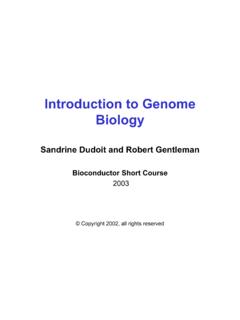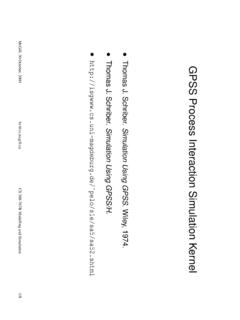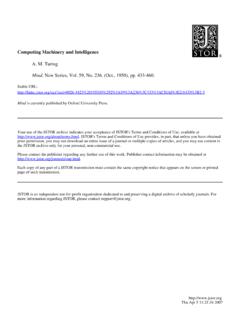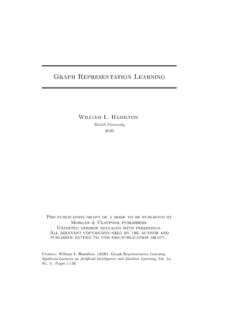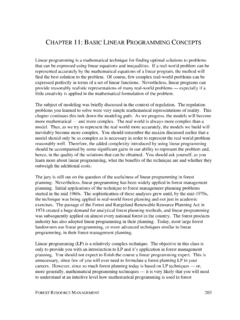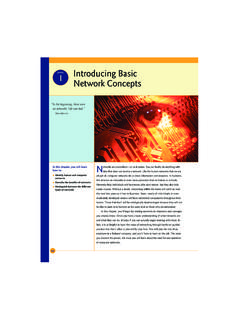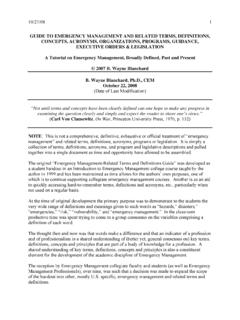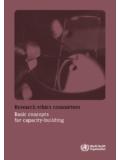Transcription of Modelling and Simulation Concepts
1 ModellingandSimulationConceptsCS522 FallTerm2001 HansVangheluweAta rstglance,it is , a varietyofapplicationdomainssuchas uiddynamics,energysystems,andlogisticsma nagementmake useofit inoneformoranother. Dependingonthecontext,modellingandsimula tionis oftenseenasa sub-setofSystemsTheory, ControlTheory, NumericalAnalysis,ComputerScience,Arti cialIntelligence, , modellingandsimulationintegratesallofthe above , paradigm,it is a wayofrepresentingproblemsandthinkingabou tthem,asmuchasa ,abstractmodelsarebuiltinductivelyfromob servationsofa ,modelsdeductivelyderivedfroma prioriknowledgeareusedtobuildasystem, ,aniterative combinationofanalysisanddesignisneededto solve onthebehaviourofdynamical( ,time-varying)systems,staticsystems(such asentity-relationship modelsandclassdiagrams,describedin theUni edModellingLanguageUML[RJB99])area (obeyingconservationandconstraintlaws)an dnon-physical(informational,suchassoftwa re)
2 ,anintroductiontothebasicconceptsofmodel lingandsimulationis presentsmodellingandsimulationconceptsas introducedbyZeigler[Zei84, ZPK00].Objectis is studied, a hypothetical,abstractrepresentationofthe object's properties,in particular, itsbehaviour, whichis validinallpossiblecontexts,anddescribesa lltheobject's hypotheticalaswewillnever inpractice beabletoconstruct/representsucha total basemodelexistsat allis wellde nedobjectintheRealWorldunderspeci cconditions,onlyconsideringspeci systemintherealworld,theexperimentalfram e(EF)describesexperimentalconditions(con text),aspects,.. ,theExperimentalFramere ectstheobjectivesoftheexperimenterwhoper formsexperimentsona realsystemor,throughsimulation,ona (seeFigure2),anExperimentalFrameconsists oftwosetsofvariables,theFrameInputVariab lesandtheFrameOutputVariables, , ,atransducerdescribesthetransformationst obeappliedtothesystem(experiment)ormodel ( Simulation ) ,outputreferstophysicalsystemoutputaswel lastothesyntheticoutputsintheformofinter nalmodelstatesmeasuredbyanobserver.
3 Incaseofa model, ,a generatoranda transducer,1 Basicconcepts2 Real-WorldentityBaseModelSystem Sonly study behaviour inexperimental contextexperimentwithin contextModel MSimulation ResultsExperiment Observed Datawithin contextsimulate= virtual experimentModel Basea-priori knowledgevalidationREALITYMODELGOALSM odelling and Simulation ProcessFigure1:ModellingandSimulationSys tem(real or model)generatortransduceracceptorExperim ental FrameFrame InputVariablesFrame OutputVariablesFigure2:SystemversusExper imentalFrame1 Basicconcepts3 Real SystemAbstract ModelExperiment ResultsSimulation Resultsexperimentvirtual experimentmodelling/abstractionabstracti onFigure3: Modelling SimulationMorphismanExperimentalFramemay alsocompriseanacceptorwhichcomparesfeatu resofthegeneratorinputswithfeaturesofthe transducedoutput,anddetermineswhetherthe system(realormodel) ts thisExperimentalFrame,andhence,theexperi menter's objectives.
4 (Lumped)Modelgivesanaccuratedescriptiono fa systemwithinthecontextofa accuratedescription needstobede nedprecisely. Usually, certainpropertiesofthesystem's structureand/orbehaviourmustbere ectedbythemodelwithina certainrangeofaccuracy. Note:a lumpedmodelisnotnecessarilya lumpedparametermodel[Cel91]. Duetothediverseapplicationsofmodellingan dsimulation,terminologyoverlapis (in uenceitsinputandparameters)orit ,theexperimentationenvironmentmaybeseena sasysteminitsownright(whichmayinturnbemo delledbya lumpedmodel).Also, lumpedmodeldescribedina certainformalism(suchasPetriNet,Differen tialAlgebraicEquations(DAE)orBondGraph)p roducessimulationresults: thedynamicinput/outputbehaviour. ,whichmimicsthereal-worldexperiment,canb eseenasvirtualexperimentation, allowingonetoanswerquestionsabout(thebeh aviourof)a ,theparticulartechniqueuseddoesnotmatter .
5 Whereasthegoalofmodellingis tomeaningfullydescribea systempresentinginformationinanunderstan dable,re-usableway, theaimofsimulationis tobefastandaccurate. Symbolictech-niquesareoftenfavouredovern umericalonesasthey allow ,Asin x Bcos x asa symbolicsolutionto theharmonicequationd2xdt2 x(withAandBdeterminedbytheinitialconditi ons)is ,symbolicoptimizationshave a Experiment/Model VirtualExperimentschemeis thatthereis aho-momorphicrelationbetweenmodelandsyst em:buildinga modelofa realsystemandsubsequentlysimulatingitsbe haviourshouldyieldthesameresultsasperfor minga realexperimentfollowedbyobservationandco dify-ingtheexperimentalresults(seeFigure 3).Asimulationmodelis a toolforachievinga goal(design,analysis,control,optimisatio n,.. ) [BO96]. A fundamentalprerequisiteis thereforesomeassurancethatinferencesdraw nfrommodellingandsimulation(tools)canbea cceptedwithcon dence.
6 Theestablishmentofthiscon denceisassociatedwithtwo distinctactivities;namely, veri cationistheprocessofcheckingtheconsisten cy ofa simulationprogramwithrespecttothelumpedm odelitis , veri cationis concernedwiththecorrectnessofthetransfor mationfromsomeintermediateabstractrepres entation(theconceptualmodel)totheprogram code(thesimulationmodel)ensuringthatthep rogramcodefaithfullyre ectsthebehaviourthatis implicitinthespeci (code).If thiscompilercanbeveri ed,alltransformationsbythecompilerarever i theprocessofcomparingexperimentmeasureme ntswithsimulationresultswithinthecontext ofa certain2 Themodellingandsimulationprocess4 CauseEffectInputOutputSystemConceptualMo delSimulationModelBehaviouralValidationC onceptualModel ValidationVerificationStructuralValidati onFigure4:Veri cationandvalidationactivitiesExperimenta lFrame[Bal97].
7 Whencomparisonshowsdifferences, largenumberofmatchingmeasurementsandsimu lationresults, thoughincreasingcon dence,doesnotprovevalidityofthemodelhowe ver. ,Popperhasintroducedtheconceptoffalsi cation[Mag85], theenterpriseoftryingtofalsifyordisprove a modelmaystatethatwaterina potboilsat100oC. Many experimentswillcon rmthismodel,untileitherthepotis closedoris takingtoa , it shouldleadtoa re nementofthemodel's experimentalframeontheonehandandtoanatte mpttoexpandthemodelto pot,a restrictedexperimentalframewouldstatetha tthepressuremustbeconstant(1atm). ed; ,conceptualmodelvalidation,structuralval idation, conceptualmodelwithrespecttothesystem,wh eretheobjective is theevaluationofthestructureofa theevaluationofthesimulationmodelbehavio ur. Anoverviewofveri cationandvalidationactivitiesis shownin Figure4. It is notedthatthecorrespondencein generatedbehaviourbetweena systemanda ,whenusingmodelstoexchangeinformation,a , a understandany enterprise,it is necessarytoanalyzetheprocess: whichactivitiesarepreformed,whatentities areop-eratedon,andwhatthecausalrelations hips(determiningactivityorderandconcurre ncy) ,aprescribedprocesscanbethebasisforautom ationandimplementationofa softwaretool[Hum89, HK89].
8 Notehow a prescribedprocessis notnecessarilydeterministicasit maystillleave a largenumberofdecisionsto exempli edbytheSEIC apabilityMaturityModel( )whichassessesthequalityofsoftwarecompan iesbythelevel ofknowl-edge,re-use, depictedinFigure5. Bymeansofa simplemass-springexperimentexample(seeFi gure6), ,a massslidingwithoutfrictionovera horizontalsurfaceis connectedtoa Themodellingandsimulationprocess5 Experimental Frame DefinitionStructure CharacterisationParameter EstimationSimulationValidationclass of parametric model candidatesparametric modelmodel with meaningful parameter valuessimulated measurementsvalidated modela prioriknowledgemodeller s andexperimenter sgoalsexperiment observation(measurement)dataInformation SourcesActivitiesFigure5:Model-basedsyst emsanalysisWALLRestLength [m]WALL position x [m]Mass m [kg]Mass m [kg]Figure6:Mass-Springexample2 Themodellingandsimulationprocess6 Figure7:MeasurementdataAnumberofInformat ionSources(eitherexplicitintheformofdata /model/knowledgebasesorimplicitintheuser 'smind) PrioriKnowledge.
9 Indeductivemodelling, onestartsfromgeneralprinciples suchasmass,energy, momentumconservationlawsandconstraints anddeducesspeci Intheexample,thea prioriknowledgeconsistsofNewton's secondlawofmotion, :thelevelofabstraction,formalismsused,me thodsemployed,.. arealldeterminedbythetypeofquestionswewa nttoanswer. Intheexample,possiblequestionsare: whatisa suitablemodelforthebehaviourofa springforwhichwehave positionmeasurements? , whatis thespringconstant? , givena suitablemodelandinitialconditions,predic tthespring's behaviour , howtobuildanoptimalspringgivenperformanc ecriteria? ,.. :ininductivemodelling, deductive typicalinsystemsanal-ysis. Figure7 plotsthenoisymeasuredpositionoftheexampl e's massasa , ,it re ectsthemodeller's ,it consistsofageneratordescribingpossiblein putsto thesystem,atransducerdescribingtheoutput processing( ,calculatingperformancemeasuresintegrati ngover theoutput),andanacceptordescribingthecon ditions(logicalexpressions)underwhichthe system(beit realormodelled) ,theexperimentalframemightspecifythatthe positiondeviationofthemassfromtherestpos itionwill/mayneverbelargerthan10% ed, frame,a classofmatchingmodelscanbeidenti ,theappropriatemodelstructureis selectedbasedona ,afeatureofanidealspring(connectedtoa frictionlessmass)is non-idealspring,orinthepresenceoffrictio n, , non-causal(notspecifyingwhichvariablesar eknownandwhichneedtobecomputed)
10 Themodellingandsimulationprocess7xx_meas uredsimple frictionless mass - spring systemtime [s]0123position [m] :FittedsimulationresultsCLASSS pring"IdealSpring":DAEmodel::={OBJ F_left:ForceTerminal,OBJ F_right:ForceTerminal,OBJ RestLength:LengthParameter,OBJ SpringConstant:SCParameter,OBJ x: LengthState,OBJ v: SpeedState,F_left- F_right= - SpringConstant*(x - RestLength),DERIV([x, [t,]]) = v,EF_assert(x - RestLenght< RestLength/100),},Subsequently, duringmodelcalibration, parameterestimationyieldsoptimalparamete rvaluesforreproducinga ,a simulatoris meaningfulmodelrepresentationforundersta ndingandre-use andsimulation accuracyandspeed ,a edmodelandparameters,simulationallowsone tomimicthesystembehavior(virtualexperime ntation) ,anoptimizer, a trainer, ora validity:is it capablenotonlyofreproducingdatawhichwasu sedtochoosethemodelandtoidentifyparamete rsbutalsoofpredictingnew behavior?

